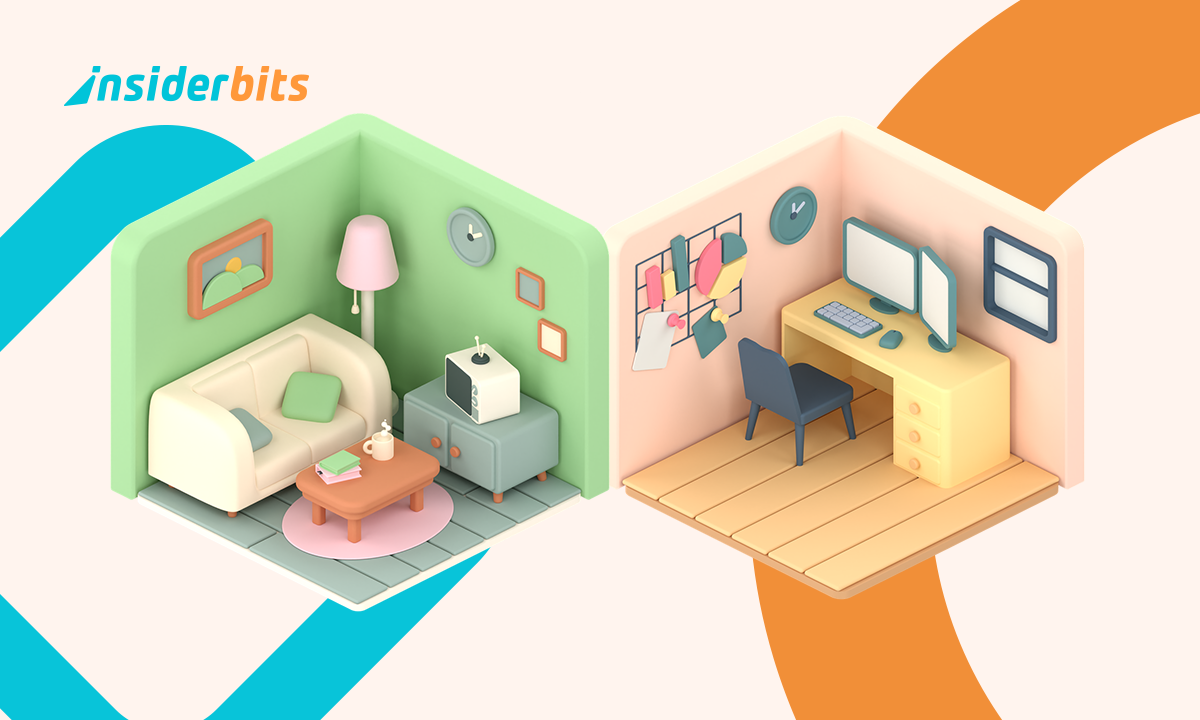Living in a small space doesn’t mean you have to sacrifice style or functionality. With the right layout, even the tiniest rooms can feel open, organized, and inviting. Strategic furniture placement, vertical storage, and multi-use pieces can make a big difference. When it comes to room layout ideas, it’s all about making the most of every square foot without feeling cramped.
Modern apps and tools now make it easier than ever to plan your space digitally. You can experiment with layouts, test furniture arrangements, and visualize designs right from your phone. Whether you’re in a studio apartment or a compact bedroom, these tips and tools will help you create a space that works hard and looks great.
Room Layout Ideas to Maximize Small Spaces Efficiently
Living in a small space doesn’t mean sacrificing comfort or style. With the right room layout ideas, you can create a functional and visually appealing area. Key strategies include:
- Multi-functional furniture (beds with storage, foldable tables);
- Strategic furniture placement (floating shelves, corner desks);
- Light and color tricks (mirrors, light colors to expand space visually).
- DIY Room Decor Ideas That Will Transform Your Space
- Creative Easter Home Decorations: Transform Your Space
- DIY Home Improvement: Apps for Decorating Projects
Furniture Arrangements That Improve Flow and Functionality
Arranging furniture isn’t just about looks—it’s about creating a space that works well for your daily life. With thoughtful planning, furniture placement becomes a tool for better living.
Smart layouts can improve traffic flow, maximize usable space, and make your home more comfortable and efficient.
The “Zoning” Technique
Divide your room into functional zones:
- Sleeping area (bed against the wall);
- Workstation (compact desk near natural light);
- Living space (small sofa or floor seating).
Diagonal Placement
Angling furniture (like a bed or desk) can:
- Create better walkways;
- Make the room feel more dynamic;
- Maximize corner spaces.
Floating Furniture
Avoid pushing everything against walls. Instead:
- Leave some breathing space behind sofas;
- Use slim consoles or shelves as room dividers.
Storage Tricks to Open Up Tight Areas Without Remodeling
Vertical Storage Solutions
- Wall-mounted shelves (instead of bulky bookcases);
- Over-the-door organizers (for shoes, accessories);
- Tall, narrow cabinets (use height, not width).
Hidden Storage Ideas
- Ottomans with storage (for blankets or books);
- Under-bed drawers (great for seasonal items);
- Floating nightstands (free up floor space).
Dual-Purpose Furniture
- Sofa beds (for guests);
- Nesting tables (expand when needed);
- Fold-down desks (workspace that disappears).
Visual Layout Tools to Plan Before Buying or Moving Furniture
Before buying or rearranging furniture, visual layout tools can help you avoid costly mistakes and save time.
These apps and platforms let you create floor plans, test different setups, and see how furniture will fit—all without lifting a thing. It’s a smart way to turn ideas into a functional, well-designed space.
Magicplan (Best for Floor Plans)
Magicplan is a powerful app designed for creating 2D and 3D floor plans directly from photos. It accurately measures room dimensions and lets users visualize furniture arrangements in real time.
Ideal for both professionals and homeowners, Magicplan makes it easy to plan renovations, generate layouts, and even estimate material costs.
With its advanced AR and design features, it’s a go-to tool for remodeling or interior design projects. It’s available for Android and iOS.
Room Planner by iCanDesign
Room Planner by iCanDesign is a highly visual interior design app that allows users to experiment with furniture placement using a drag-and-drop interface.
The app offers realistic 3D previews and is especially useful for testing different layouts, color schemes, and decor combinations.
It’s popular among DIY decorators and interior designers looking for a flexible, intuitive planning tool without needing technical skills.
Mistakes That Make Small Rooms Feel Even Smaller
Creating a functional small space requires avoiding common pitfalls that can make rooms feel cramped and uncomfortable. Here’s an in-depth look at these mistakes and professional solutions:
Overcrowding with Furniture
The Problem:
Trying to fit too many pieces creates visual chaos and reduces walkable space. A survey by the National Association of Home Builders found 68% of small-space dwellers regret buying oversized furniture.
Professional Solutions:
- Follow the “3-Piece Rule” for living rooms (sofa + 2 chairs max);
- Choose multi-functional items (storage ottomans, nesting tables);
- Maintain at least 24″ walkways between furniture;
- Use the “floating furniture” technique (leave space behind pieces).
Best Alternative:
Replace bulky sectionals with a compact loveseat and armchair combo that can be rearranged as needed.
Poor Color Choices
The Problem:
Dark colors absorb light, while busy patterns create visual clutter. Interior designers note dark walls can make a room feel 10-15% smaller.
Professional Solutions:
- 60-30-10 color rule: 60% light neutrals, 30% medium tones, 10% accents;
- Monochromatic schemes with texture variation;
- Glossy finishes that reflect light;
- Continue wall colors onto ceilings for height.
Pro Tip:
Use a bold accent wall only if it’s the shortest wall in the room to create depth.
Inadequate Lighting
The Problem:
The American Lighting Association found proper lighting can make spaces feel up to 20% larger, yet most small rooms have just one overhead source.
Professional Solutions:
- Layer lighting (ambient + task + accent);
- Install wall sconces to free up floor space;
- Use LED strip lights under cabinets;
- Place mirrors opposite light sources.
Smart Fix:
Replace heavy drapes with light-filtering cellular shades that provide privacy without blocking light.
Wasted Vertical Space
The Problem:
A University of Tokyo study showed utilizing vertical space can increase functional area by up to 30% in small rooms.
Professional Solutions:
- Floor-to-ceiling shelving units;
- Hanging planters and wall-mounted storage;
- Tall, narrow bookcases instead of wide units;
- Bunk beds or lofted sleeping areas.
Space-Saving Idea:
Install floating shelves above doorways for rarely used items.
Additional Common Mistakes
Poor Furniture Scaling:
- Oversized pieces overwhelm rooms;
- Solution: Measure carefully and choose apartment-sized furniture.
Cluttered Surfaces:
- Too many decorative items create chaos;
- Solution: Implement the “one surface clear” rule.
Inefficient Storage:
- Wasted space under beds and furniture;
- Solution: Use all available voids with slim storage containers.
For comprehensive space planning assistance, our digital house planning guide provides professional strategies to optimize every square foot.
Remember that in small spaces, every design choice should serve multiple purposes—combining aesthetics with functionality for maximum impact.
Final Thoughts
Smart room layout ideas can transform even the tiniest spaces into functional, stylish areas. Use multi-purpose furniture, smart storage, and digital planners to maximize every square foot.
For additional inspiration, visit Plan Your Room or explore IKEA’s small space solutions. Start optimizing your space today!




